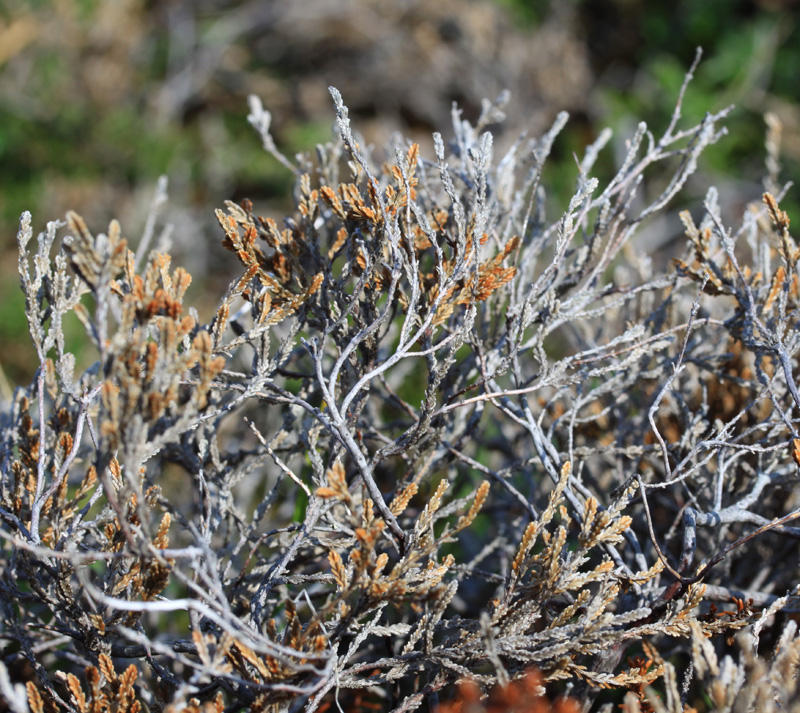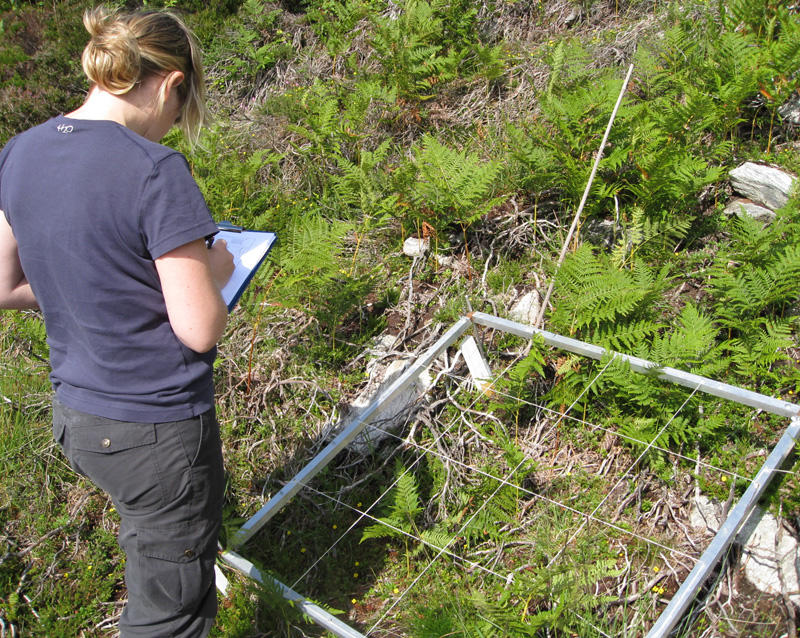LandPress
The combined effects of climate and land-use change pose increasing threats to nature and its values and services. LandPress studies how climate and land-use change affects biodiversity and natural resources in Norwegian coastal heathlands.

Main content
Cessation or reduction of agricultural land-use leads to overgrowth and loss of habitats, biodiversity, ecosystem functions and services. Such changes affect a variety of habitats, many of which are now classified as threatened across Norway and Europe. When overgrowth occurs in combination with climate change, problems accentuate. Extreme weather, in the form of droughts, in combination with overgrowth increases landscape fire risk. Uncontrolled wildfires constitute a societal cost, both in terms of firefighting, replacement of lost values, and security. Active agriculture can therefore have social value, beyond food production, through producing ecosystem services such as reduced wildfire risk.
In 2014 an intense winter drought led to massive heather death along the Norwegian coast. LandPress uses this "natural experiment" in observational studies and field experiments to test whether heather burning is an effective measure to prevent drought damage and restore damaged moorland. In a broader context, we will look at how agricultural produce ecosystem services for the benefit of society, with particular emphasis on reduced wildfire risk. LandPress participates in the International Drought Experiment collaboration to put our findings into a wider geographic and habitat context. LandPress will provide new knowledge-based land-use advice, which in turn will help reduce the likelihood of uncontrolled fires in the coastal landscape under changing climate.
Our objectives are:
O1: Establish relationships between Calluna dieback and variation in land use, environmental and climatic conditions locally and along a biogeographic gradient (WP1-2)
O2: Understand and experimentally assess the impacts of severe drought events on coastal heathland ecosystem dynamics and functioning (WP1-2)
O3: Experimentally assess whether prescribed burning can be used to promote Calluna’s resilience after severe drought and how this varies along biogeographic gradients (WP1-3).
O4: Understand the contribution of land management to the provision of ecosystem services, with a focus on securing low fire-risk landscapes (WP1,2,4).
O5: Develop knowledge-based management strategies to conserve heathlands, secure ecosystem service provisioning, and reduce fire risks under future climate conditions (WP1-5).
The work will be organised into five work packages:
WP1: Use remote sensing and analyses of aerialphotos taken before and after the 2014 drought event to quantify the extent of and variation in Calluna dieback along the Norwegian coast in relation to land use, local climate, environments and vegetation types (O1, 3).
WP2: Conduct drought experiments using the International Drought Experiment protocol at different locations along the coast to assess the impacts of severe drought events on the ecosytem functioning of coastal heathlands (O1, 2, 3).
WP3: Experimentally burn damaged heath to assess the efficiency of prescribed burning in promoting revegetation and restoration of ecosystem resilience of damaged heath along a climatic north-south gradient (O1,3)
WP4: Conductsocioeconomic analysis of expected total benefits and costs of heathland management in relation to fire-risk, and assess ecosystem services of the coastal heathland, including the value of a reduced risk of uncontrolled wild fire in the landscape as a result of continued land use management (O4).
WP5: Through stakeholder involvement and communication, develop strategies for how to adapt land use to climate change, ensure resilience after drought damage and take measures to reduce fire risk (O5).
Project partners:
Vigdis Vandvik (PI), Inger E. Måren (WP2), and PhD student Siri Haugum (WP2) University of Bergen
Liv Guri Velle (Co-PI) Møreforsking
Pål Thorvaldsen (WP1, WP2, WP3) and Annette Bär (WP1, WP2, WP3) Norwegian Institute of Bioeconomy Research (NIBIO)
Iulie Aslaksen (WP4), and Kristine M Grimsrud (WP4) Statistics Norway
Per Arild Garnåsjordet (WP4) Norwegian Institute for Nature Research (NINA)/Statistics Norway
Inger K. Schmidt (WP2, WP3) University of Copenhagen
Matt Davies (WP3 & WP5) Ohio State University.
The project reference group consists of government, industry and research representatives.
Are you a STUDENT interested in participating in LandPress, for example through a Bachelors (BIO299) or Masters project with us? Contact Vigdis!



